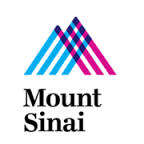Bone Marrow Transplantation vs Standard of Care in Patients With Severe Sickle Cell Disease (BMT CTN 1503)
| Status: | Recruiting |
|---|---|
| Conditions: | Anemia |
| Therapuetic Areas: | Hematology |
| Healthy: | No |
| Age Range: | 15 - 40 |
| Updated: | 5/4/2018 |
| Start Date: | November 2016 |
| End Date: | March 2023 |
| Contact: | Jamie Garrison |
| Email: | bmtctn1503@emmes.com |
A Study to Compare Bone Marrow Transplantation to Standard Care in Adolescents and Young Adults With Severe Sickle Cell Disease (BMT CTN #1503)
This is a clinical trial that will compare survival and sickle related outcomes in
adolescents and young adults with severe sickle cell disease after bone marrow
transplantation and standard of care. The primary outcome is 2-year overall survival.
adolescents and young adults with severe sickle cell disease after bone marrow
transplantation and standard of care. The primary outcome is 2-year overall survival.
This is a prospective phase II multi-center trial of hematopoietic stem cell transplantation
or standard of care based on availability of HLA-matched related or unrelated donor after
confirmation of clinical eligibility. In order to minimize bias assignment to either
treatment arm, clinical eligibility to both treatment arms are similar and donor availability
is not known at referral. HLA typing and donor search is initiated upon confirmation of
clinical eligibility for the study. Additionally, all analyses of primary and secondary
endpoints will follow the Intent-to-Treat principle to address potential bias introduced by
participants with donors not proceeding to transplantation or those without a matched donor
receiving transplantation with less well-matched donors.
The primary outcome is 2-year overall survival. Our hypothesis is that patients who receive
bone marrow transplantation will experience early deaths but that this will plateau by 2
years after transplantation. Patients who receive standard of care will not experience early
death but will succumb to their disease at a rate much higher than the general population.
Therefore, the goal of the study is to establish that the difference in the proportion of
patients surviving is not significantly more than 15% lower in the donor arm at 2-years after
assignment to treatment arm.
Secondary endpoints will compare changes in sickle cell disease related events (pulmonary
hypertension, cerebrovascular events, renal function, avascular necrosis, leg ulcer) and
functional outcomes [6-minute walk distance (6MWD), health-related quality of life, cardiac
function, pulmonary function, and mean pain intensity as assessed by a multidimensional
electronic pain diary] from baseline to 2-years after assignment to treatment arms.
Additionally for patients assigned to the donor arm and expected to undergo transplantation,
hematopoietic recovery, graft rejection, acute and chronic graft-versus-host disease, other
significant transplant-related complications and disease-free survival will be reported.
or standard of care based on availability of HLA-matched related or unrelated donor after
confirmation of clinical eligibility. In order to minimize bias assignment to either
treatment arm, clinical eligibility to both treatment arms are similar and donor availability
is not known at referral. HLA typing and donor search is initiated upon confirmation of
clinical eligibility for the study. Additionally, all analyses of primary and secondary
endpoints will follow the Intent-to-Treat principle to address potential bias introduced by
participants with donors not proceeding to transplantation or those without a matched donor
receiving transplantation with less well-matched donors.
The primary outcome is 2-year overall survival. Our hypothesis is that patients who receive
bone marrow transplantation will experience early deaths but that this will plateau by 2
years after transplantation. Patients who receive standard of care will not experience early
death but will succumb to their disease at a rate much higher than the general population.
Therefore, the goal of the study is to establish that the difference in the proportion of
patients surviving is not significantly more than 15% lower in the donor arm at 2-years after
assignment to treatment arm.
Secondary endpoints will compare changes in sickle cell disease related events (pulmonary
hypertension, cerebrovascular events, renal function, avascular necrosis, leg ulcer) and
functional outcomes [6-minute walk distance (6MWD), health-related quality of life, cardiac
function, pulmonary function, and mean pain intensity as assessed by a multidimensional
electronic pain diary] from baseline to 2-years after assignment to treatment arms.
Additionally for patients assigned to the donor arm and expected to undergo transplantation,
hematopoietic recovery, graft rejection, acute and chronic graft-versus-host disease, other
significant transplant-related complications and disease-free survival will be reported.
Inclusion Criteria:
1. Age ≥ 15 and < 41 years
2. Severe sickle cell disease [Hemoglobin SS (Hb SS), Hemoglobin SC (Hb SC) or Hemoglobin
SBeta thalassemia (Hb Sβ) genotype] with at least 1 of the following manifestations
(a-e):
1. Clinically significant neurologic event (stroke) or any neurological deficit
lasting > 24 hours;
2. History of two or more episodes of acute chest syndrome (ACS) in the 2-year
period preceding enrollment despite the institution of supportive care measures
(i.e. asthma therapy);
3. Three or more pain crises per year in the 2-year period preceding enrollment
(required intravenous pain management in the outpatient or inpatient hospital
setting). Clinical documentation of pain management in the inpatient or
outpatient setting is required.
4. Administration of regular RBC transfusion therapy, defined as receiving 8 or more
transfusion events per year (in the 12 months before enrollment) to prevent
vaso-occlusive clinical complications (i.e. pain, stroke, and acute chest
syndrome)
5. An echocardiographic finding of tricuspid valve regurgitant jet (TRJ) velocity ≥
2.7 m/sec.
3. Adequate physical function as measured by all of the following:
1. Karnofsky/Lansky performance score ≥ 60
2. Cardiac function: Left ventricular ejection fraction (LVEF) > 40%; or LV
shortening fraction > 26% by cardiac echocardiogram or by Multi Gated Acquisition
Scan (MUGA).
3. Pulmonary function:
a. Pulse oximetry with a baseline O2 saturation of ≥ 85% b. Diffusing capacity of the
lung for carbon monoxide (DLCO) > 40% (corrected for hemoglobin) d. Renal function:
Serum creatinine ≤ 1.5 x the upper limit of normal for age as per local laboratory and
24 hour urine creatinine clearance >70 mL/min; or GFR > 70 mL/min/1.73 m2 by
radionuclide Glomerular Filtration Rate (GFR).
e. Hepatic function:
1. Serum conjugated (direct) bilirubin < 2x upper limit of normal for age as per
local laboratory. Patients with hyperbilirubinemia as a consequence of
hyperhemolysis, or who experience a sudden, profound change in the serum
hemoglobin after a RBC transfusion are not excluded.
2. alanine aminotransferase (ALT) and aspartate aminotransferase (AST) < 5 times
upper limit of normal as per local laboratory.
Additional inclusion required for donor arm participants to proceed with transplant
1. Liver MRI (≤ 90 days prior to initiation of transplant conditioning) to document
hepatic iron content is required for participants who are currently receiving ≥8
packed red blood cell transfusions for ≥1 year or have received ≥20 packed red blood
cell transfusions (cumulative). Participants who have hepatic iron content ≥7 mg Fe/ g
liver dry weight by liver MRI must have a liver biopsy and histological
examination/documentation of the absence of cirrhosis, bridging fibrosis and active
hepatitis (≤ 90 days prior to initiation of transplant conditioning).
2. Lack of clinical or radiologic evidence of a recent neurologic event (such as stroke
or transient ischemic attack) by Cerebral MRI/MRA within 30 days prior to initiating
transplant conditioning. Subjects with clinical or radiologic evidence of a recent
neurologic event will be deferred for ≥ 6 months with repeat cerebral MRI/MRA to
ensure stabilization of the neurologic event prior to proceeding to transplantation
3. Absence of donor specific HLA antibodies
4. Documentation of participant's willingness to use approved contraception method until
discontinuation of all immunosuppressive medications is to be documented in the
medical record corresponding with the consent conference.
5. The HLA-matched donor must be medically fit to donate and willing to donate bone
marrow.
Exclusion Criteria:
1. HLA typing prior to referral (consultation with HCT physician). If a subject has had
HLA typing with accompanying documentation that full siblings were not HLA typed and
that a search of the unrelated donor registry was not performed the subject will be
considered eligible. Documentation will be reviewed and adjudicated by the Protocol
Officer or his/her designee.
2. Uncontrolled bacterial, viral or fungal infection in the 6 weeks before enrollment.
3. Seropositivity for HIV.
4. Previous HCT or solid organ transplant.
5. Participation in a clinical trial in which the patient received an investigational
drug or device must be discontinued at enrollment.
6. A history of substance abuse as defined by version IV of the Diagnostic & Statistical
Manual of Mental Disorders (DSM IV).
7. Demonstrated lack of compliance with prior medical care as determined by referring
physician.
8. Pregnant or breast feeding females.
9. Inability to receive HCT due to alloimmunization, defined as the inability to receive
packed red blood cell (pRBC) transfusion therapy.
We found this trial at
38
sites
Newark Beth Israel Medical Center Newark Beth Israel Medical Center, a regional care, teaching hospital...
Click here to add this to my saved trials
Emory University Emory University, recognized internationally for its outstanding liberal artscolleges, graduate and professional schools,...
Click here to add this to my saved trials
University of Chicago One of the world's premier academic and research institutions, the University of...
Click here to add this to my saved trials
Barbara Ann Karmanos Cancer Institute Karmanos is based in southeast Michigan, in midtown Detroit, and...
Click here to add this to my saved trials
University of Iowa With just over 30,000 students, the University of Iowa is one of...
Click here to add this to my saved trials
University of Miami A private research university with more than 15,000 students from around the...
Click here to add this to my saved trials
Children's Hospital of Philadelphia Since its start in 1855 as the nation's first hospital devoted...
Click here to add this to my saved trials
Children's Healthcare of Atlanta Whether treating a toddler in an emergency or supporting a teen...
Click here to add this to my saved trials
Grady Memorial Hospital Grady is an internationally recognized teaching hospital staffed exclusively by doctors from...
Click here to add this to my saved trials
Click here to add this to my saved trials
Boston University Boston University is no small operation . With over 33,000 undergraduate and graduate...
Click here to add this to my saved trials
Click here to add this to my saved trials
Click here to add this to my saved trials
Click here to add this to my saved trials
Click here to add this to my saved trials
101 Manning Dr
Chapel Hill, North Carolina 27599
Chapel Hill, North Carolina 27599
(919) 966-4131

University of North Carolina Hospital at Chapel Hill The UNC Health Care System is a...
Click here to add this to my saved trials
171 Ashley Avenue
Charleston, South Carolina 29425
Charleston, South Carolina 29425
843-792-1414

Medical University of South Carolina The Medical University of South Carolina (MUSC) has grown from...
Click here to add this to my saved trials
University of Virginia The University of Virginia is distinctive among institutions of higher education. Founded...
Click here to add this to my saved trials
Ohio State University The Ohio State University’s main Columbus campus is one of America’s largest...
Click here to add this to my saved trials
Duke Univ Med Ctr As a world-class academic and health care system, Duke Medicine strives...
Click here to add this to my saved trials
Click here to add this to my saved trials
Hackensack University Medical Center Hackensack University Medical Center, part of the Hackensack University Health Network,...
Click here to add this to my saved trials
3858 Sheridan Street
Hollywood, Florida 33021
Hollywood, Florida 33021
Click here to add this to my saved trials
Click here to add this to my saved trials
Click here to add this to my saved trials
Click here to add this to my saved trials
Click here to add this to my saved trials
Click here to add this to my saved trials
Click here to add this to my saved trials
Click here to add this to my saved trials
Icahn School of Medicine at Mount Sinai Icahn School of Medicine at Mount Sinai is...
Click here to add this to my saved trials
Click here to add this to my saved trials
1100 N. Lindsay
Oklahoma City, Oklahoma 73104
Oklahoma City, Oklahoma 73104
(405) 271-4000

Phone: 405-271-4022
University of Oklahoma The OU Health Sciences Center is composed of seven health-related colleges located...
Click here to add this to my saved trials
Click here to add this to my saved trials
Click here to add this to my saved trials
Virginia Commonwealth University Since our founding as a medical school in 1838, Virginia Commonwealth University...
Click here to add this to my saved trials
Click here to add this to my saved trials
111 Michigan Ave NW
Washington, District of Columbia
Washington, District of Columbia
(202) 476-5000

Childrens National Medical Center As the nation’s children’s hospital, the mission of Children’s National Medical...
Click here to add this to my saved trials














